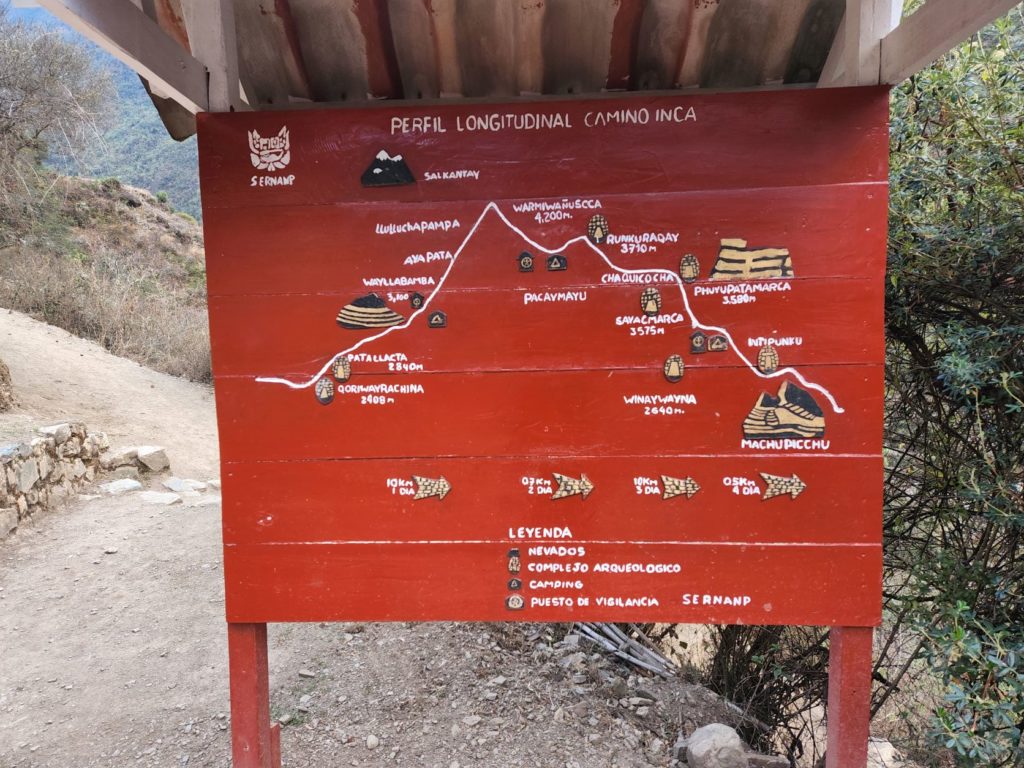
The trek to Machu Picchu on the classic Inca Trail is an inspiring experience that will help you understand why the Inca and Quechua worshiped the earth and stars. The majority of the Inca Trail is the original path built by the Incas, so you are literally walking in the footsteps of ancient Peruvians. The four-day trek through the pure nature of the Andes mountains easily became one of the most magical experiences of my life.
Day 0: Preparation Day
We arrived in Cusco about three days before our trek began and had two full days in the city. Coming from somewhere only ~30 feet above sea level to a city of >11,000 feet, we wanted to ensure we had plenty of time to acclimate to the altitude and could survive our trek to Machu Picchu. Luckily, we stayed at a hotel with unlimited coca tea, which helps with altitude. We also spent plenty of time walking around the city and adjusting.
The day before our trek began, we met with our guide and two other trekking companions. Our guide laid out our itinerary for the next four days, and we got to know each other a bit. The room was filled with excitement and nerves as we discussed next four days and whether we felt prepared. Our guide reassured us he had a 100% success rate of getting tourists through the entire trek over the past decade.
Before dispersing, the guide recommended a light dinner of soup or pasta and early bed time. We had to be well-rested for our first day on the Inca Trail.
Day 1: Training Day
Day 1 of the Inca Trail started at the hotel with a 5 a.m. wake up call. We thought this was early, but would soon consider it sleeping in. Anticipation made it hard to sleep the night before, so I felt pretty tired and grateful for the complimentary breakfast and coffee at the hotel. Just after 5:30, we were off for the start of the Inca trail.
We drove about two hours to the town of Ollantaytambo to pick up the porters – possibly the most important people on the trek. The porters carried nearly everything for us, including the tents, which they set up every night and take down every morning. They also carried all the food and cooking equipment to sustain us during the four-day trek. Our guide said he had to work as a porter for two years as part of his training. He preferred being a guide over being a porter.
The company we trekked with hired porters and guides only from the local Cusco department, which provides solid employment opportunities.
After everyone was on board, we drove another ~30 minutes to the start of the trek. Here, we ensured we had everything that we needed in the bags we were personally carrying (including our passports, which were necessary to start the trek). Also, that the bags the porters were carrying were appropriate weights. We were also able to use the restroom and make any last-minute purchases from the small store or any of the women selling a variety of goods, snacks and drinks. Though we brought rain jackets, we also decided to purchase ponchos. They would help keep our backpacks dry in case of a downpour.
We were ready to start the Inca Trail trek!
Once we sorted everything, the porters gave us snacks – bananas, oranges and crackers – and we were off to start our trek! Well, first we had to check in and prove we had our permits. But then, we were off on our trek. Our first obstacle was an extension bridge, then we were at the official start of the trail.
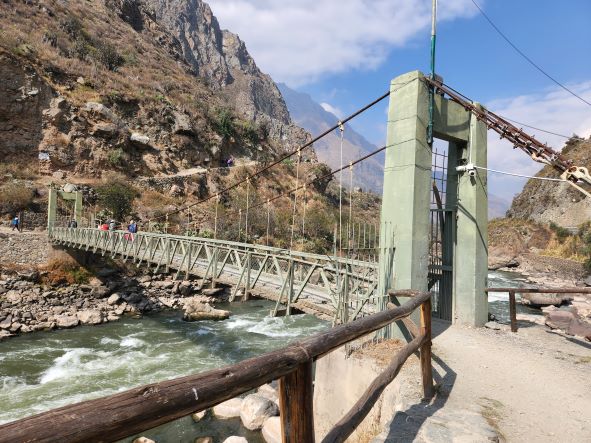
To start off, our guide took out a small bottle of Agua Florida, spirit water filled with herbs and plants from the surrounding area. He poured a small amount into each of our hands, then we rubbed our hands together, clapped three times and breathed in the scent of the Agua Florida. We would do this ritual at the start of our trek each day.
The first day of the trek was our “training day,” and our guide called the trail ‘Inca flat’. This term means that it was mostly flat, with small sections of uphill and downhill. Small family houses lined the first several miles of the trail. There are public toilets available for a fee in the areas of these houses, and most of the families also sell small hiking provisions like snacks, water and Gatorade. This day is also the only part of the trail where you’ll see horses, donkeys and other farm animals.
Like other parts of Peru, there were also plenty of stray dogs on this section of the trail. The dogs were very friendly – especially if they could smell food. But the donkeys – not so much. We had to watch out for the donkeys and ensure we were on the mountain side of the trail if one passed.
We hiked for about two hours before getting to our first official break spot
There was another house selling drinks and snacks, and bathrooms for 1 sole. This break spot had an incredible view of the river and surrounding mountains that showed us just how far we’d gone in a short amount of time.
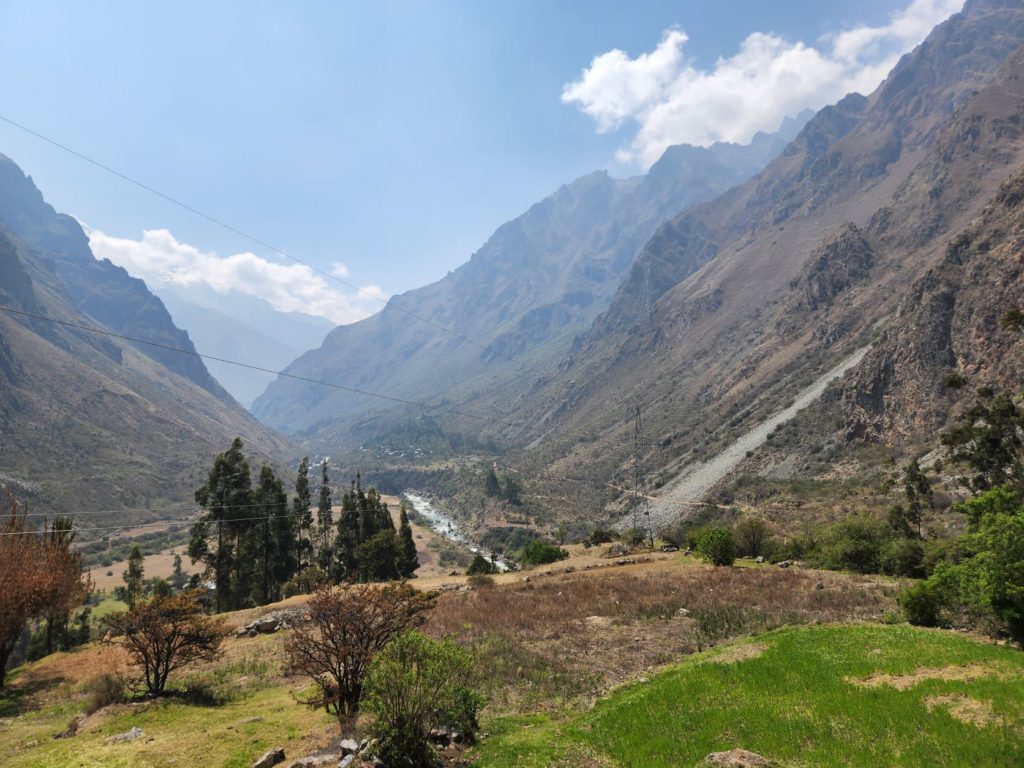
After a 15-minute break, we continued hiking until we came upon some Incan ruins of an ancient army checkpoint. In Incan times, Machu Picchu was only accessible for royals. This checkpoint ensured only the appropriate people were on the trail. From this viewpoint, we could also see the marketplace of an ancient city and small place of worship. We could also see a rock where they would sacrifice black llamas during the equinox. You won’t see many black llamas walking around Peru.
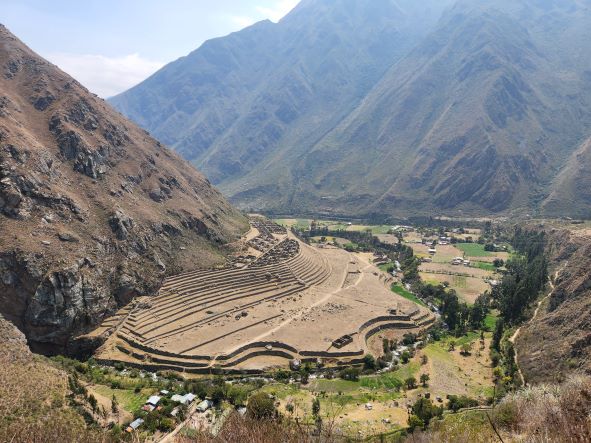
We arrived at our lunch spot in the early afternoon. The porters had set up a small tent with a table set up and water bowls to wash our hands. When it was time to eat, the porters brought bowls of vegetable noodle soup that we quickly ate. We assumed that would be the only part of our meal – a light snack before moving on – but we were wrong. They soon brought out a full feast of at least five other dishes. After all that food, they gave us about an hour to digest before moving on.
Campsite #1 was quiet and relatively secluded (aside from the friendly dogs)
We got to camp just a couple of hours later. The porters had already set up our tents, with more water bowls for washing up. There was also a woman selling water, beer and Gatorade at this campsite. For many of the families living in this area, selling these provisions to the tourists on the Inca trails is one of the main ways they make money. The trekking company would provide us with water for the remaining three days of three hike, but we bought water the first day.
After taking about an hour to change out of our hiking clothes, take a baby wipe shower and relax, we had tea time. As we entered the tent, we saw a giant plate of popcorn, cookies and tea and cocoa options. Peru has 55 varieties of corn, and this Andean popcorn was the best popcorn I’ve ever eaten. Chamomile tea with this freshly popped popcorn quickly became my favorite ritual of the trek. I still dream about this popcorn.
Dinner was an hour later, and it was as much of a feast as lunch had been. Then, we returned to our tents to sleep at only 8 p.m. We had an early wake up call and big day ahead of us.
Day 2: Challenge Day
Day #2 had an even earlier wake up call than the first day. At 4:30 a.m., we awoke to coca tea and coffee in our tents. Breakfast would be at 5, so we could start hiking by 6.
Breakfast was another feast of pancakes, eggs, fruit and more to give us energy for the day ahead. Day #2 was known as the “challenge day” because of two steep uphill climbs, followed by steep downhill. We were getting an early start to give us plenty of time to make these ascents/descents and also get ahead of other groups.
We passed another checkpoint to prove we had permits for this next section of the trail. Here, we also saw a map that detailed the wildlife we might find on the trail. I got excited to hopefully encounter some llamas.
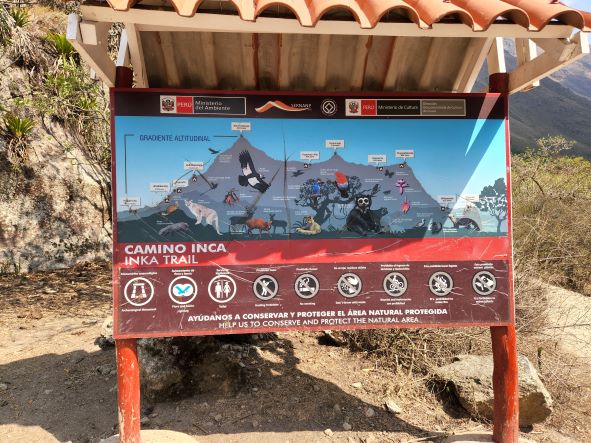
Having proven our hiking capabilities on the first day, we were permitted to hike the trail at our own pace. Our other hiking partners were a bit slower than us – especially going uphill – so we were glad we could climb at our own speed. I personally find it much easier to ascend at a slightly faster pace with minimal breaks. Though my attitude going downhill is more along the lines of “slow and steady wins the race.”
During the first couple of miles of the hike, we still passed a few small houses selling snacks and drinks, as well as some donkeys. However, we were soon past them and happy to be free of the donkeys.
Once we were past this section, we reached our first official break spot of the day
Here, we did the Agua Florida ritual with our guide and fellow trekking companions again, then were on our way. The head porter asked us not to be too speedy climbing to the lunch spot so they had time to set up everything.
As we set off on our hike again, the scenery slowly changed. Instead of houses, streams and hanging plants lined the trail. We felt almost as if we were starting to trek through the jungle. We hiked alongside one stream for awhile, then came upon our first big uphill climb.
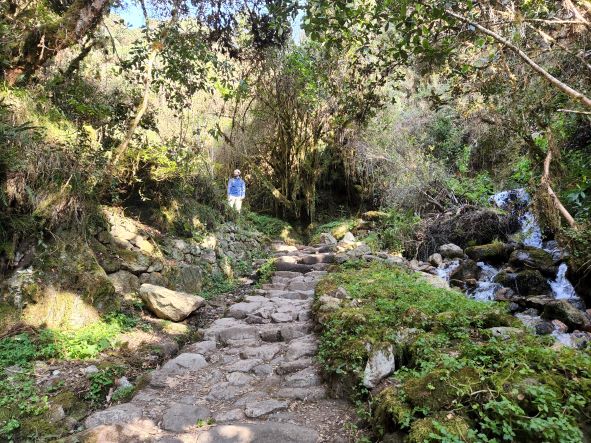
During this portion of our trek, we felt like the only hikers on the Inca Trail. It was a major contrast from the previous day where we were constantly running into hiking groups from other tour companies. Sometimes, we would run into a porter from our company. Remembering what the head porter asked earlier, we would take a break and give them a chance to walk far enough ahead of us.
We got up to our lunch spot in about half the estimated time our guide told us it would take. The head porter brought us a coffee and started asking us about our fitness routine.
This lunch spot was one of the most scenic lookouts yet on the trek. It was the first time we could truly appreciate being in the Andes, surrounded by this incredible mountain range. We relaxed, sipped our coffee and enjoyed the view while waiting for our hiking partners and guide.
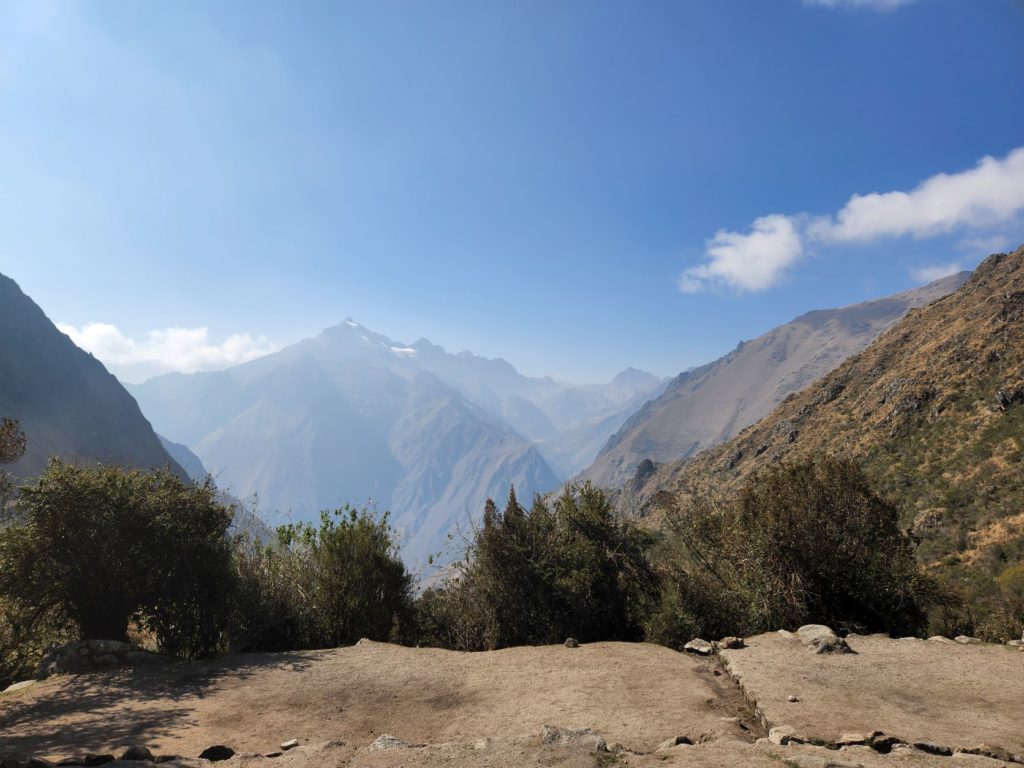
At this point, I was feeling a little disappointed by the lack of llama sightings so far…
I decided to find the bathroom, and that was when I came upon a scene that simply felt magical. A few steps up from our lunch spot, around some tall plants, I came upon a family of llamas grazing in a valley framed by the Andes mountains. I felt like I was in a storybook as I watched them eat and trot through the grass. There was even a baby llama that kept following its mom around trying to get some milk.
I’m not sure how long I stood there, completely enchanted by the scene before my eyes. It reminded me a bit of hiking in Switzerland and coming up a group of sheep wearing bells. That had made me feel like I was in the Heidi books I’d read as a kid, but this experience was even better. Eventually, I had to pull myself away and return to the lunch spot.
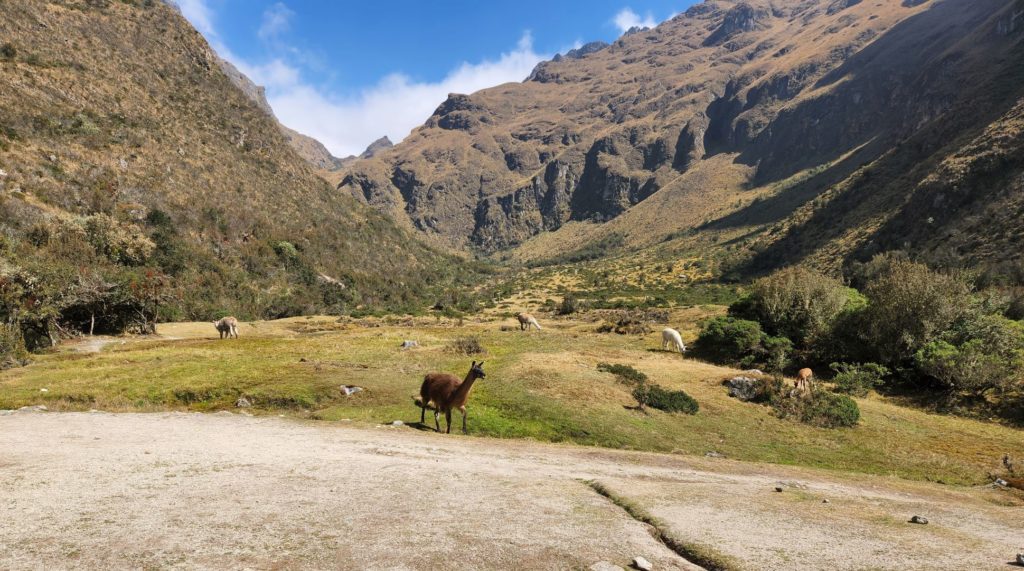
Our hiking companions arrived shortly after, and it was time for lunch. After that morning’s climb, we ate more during this lunch feast than the day before. Even though we were given another hour to digest, I’d come to regret the amount I ate a bit during our next climb.
Post-lunch and digestion, I took some time to admire the llamas for another moment before we set off again. This part of the climb is considered the toughest section of the Inca Trail: Dead Woman’s Pass. The name sounds more foreboding than it probably should. It got the name because the mountain peak looks a woman’s profile lying down on her back – not because a lot of people die on this pass.
The climb up to Dead Woman’s Pass, however, is challenging
Not only is it steep, but it’s also the highest altitude point on the Inca Trail at an elevation of nearly 14,000 feet (4,215 meters).
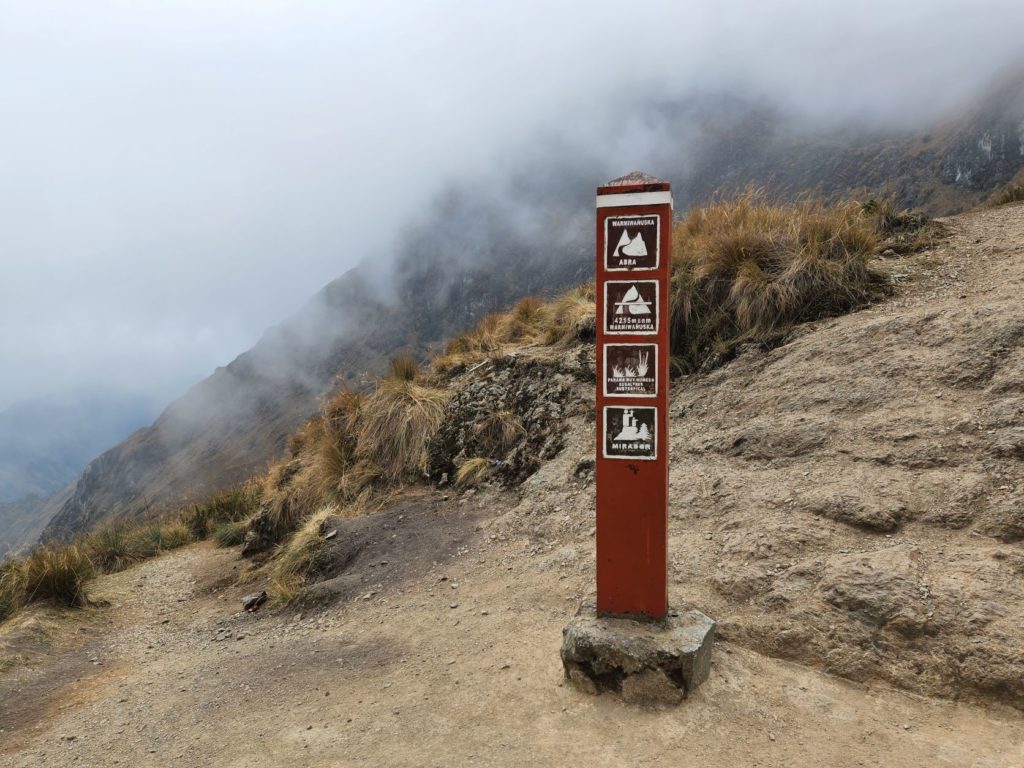
As we climbed up to the peak, I still felt a little heavy from lunch. We paused about once every 10 minutes to drink some water and admire the views, as the valley below started looking smaller and smaller.
About an hour after we started climbing, we reached the peak and were greeted with applause from others who had climbed up earlier in the day. Everyone was in high spirits. We survived what was supposed to be the most challenging part of the Inca Trail!
We had hiked this section of the trail at our own pace, and the rest of our group was still behind. Our guide was hiking with them and gave us instructions for what to do when we reached Dead Woman’s Pass. If we encountered bad weather, we were to continue hiking down to that night’s campsite. Because we luckily had good weather, we were to wait for the rest of our group to take a family picture at the peak.
The first half hour of our wait was great. The sun was out, and we appreciated relaxing, enjoying the views and taking photos.
Then, the sun started hiding as fog came in, and we were getting cold. About 50 minutes into our wait, we were nearly ready to give up and start heading for camp. Then, we saw the rest of our party coming up the mountain! The estimated hike up to Dead Woman’s Pass from our lunch site was about two hours, so they were right on time. We took a family picture with our trekking partners and guide at the peak, then finally headed down to camp.
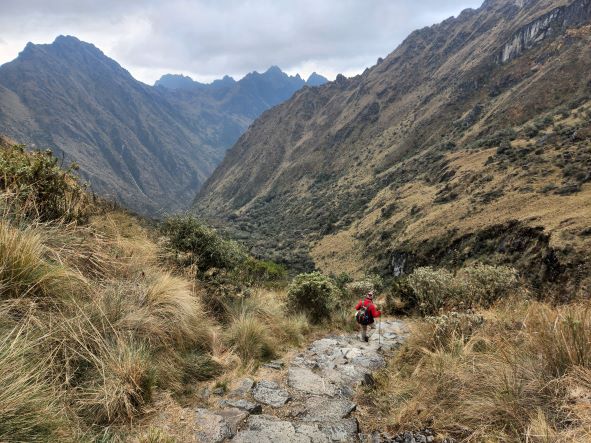
The second campsite had even better views than the first night
It was also a popular place to stargaze, especially during the dry season in June/July when you could clearly see the Milky Way. Looking out over the mountains and up at the stars, I was reminded again of why the Incas worshiped the earth and space. Lying in my sleeping bag at the tent, and looking out into the surrounding mountain range, I felt incredibly peaceful and grateful for this experience.
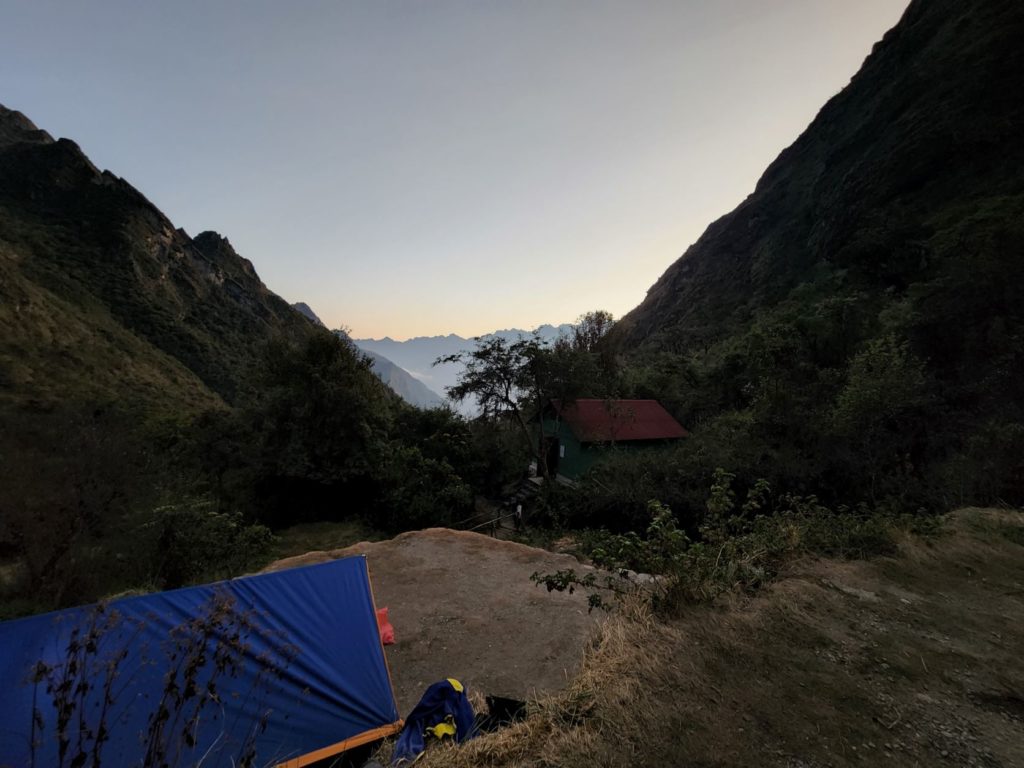
The second night followed the same routine as the first: change and baby wipe shower, tea time, dinner and sleep. I also did some stretching as I had a feeling I’d be sore in the morning. I had no trouble falling asleep early that night, even though this was also the coldest night of our trek.
Day 3: The Longest Day
Day #3 was our last full day on the Inca Trail, and also our longest day. We got to “sleep in” with a 5 a.m. wake up call with more coffee and coca tea. As we prepared for the day ahead, I realized just how sore I felt. My calves were incredibly tight, and my quads and hamstrings weren’t too happy either. Two full days of hiking had caught up to my lower body.
However, I was determined to make the most of our final full day of the trek and eager to get going. We started the trek as the sun was rising over the mountains, and it was absolutely beautiful.
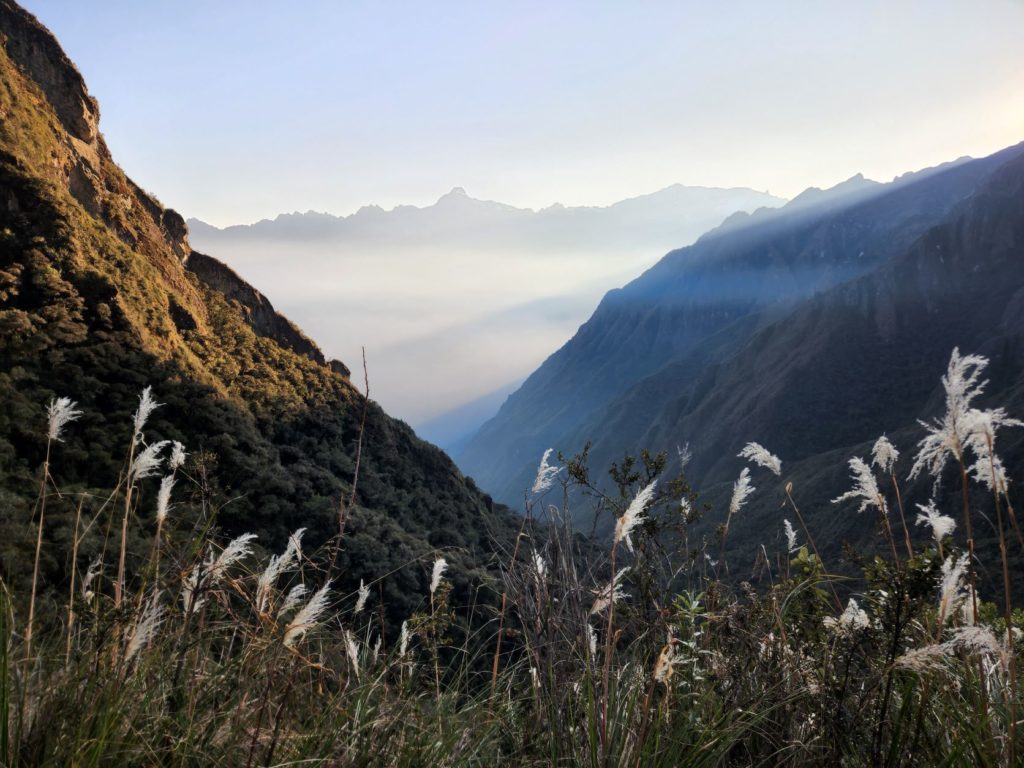
We hiked with our group to the first Incan ruins of the day. You could see Dead Woman’s Pass from these ruins and get the full picture of the woman laying on her back. Incas used this spot to see and communicate who was coming over the pass.
Here, we also put on bug spray. We were about to be hiking in low enough elevation to where we would encounter mosquitos for the first time on our trek.
After this point, we were free to hike at our own pace again. We hiked up the mountain until we came to an area where we would put our bags down then walk up another small hill to get to one of the best lookout points of our trip.
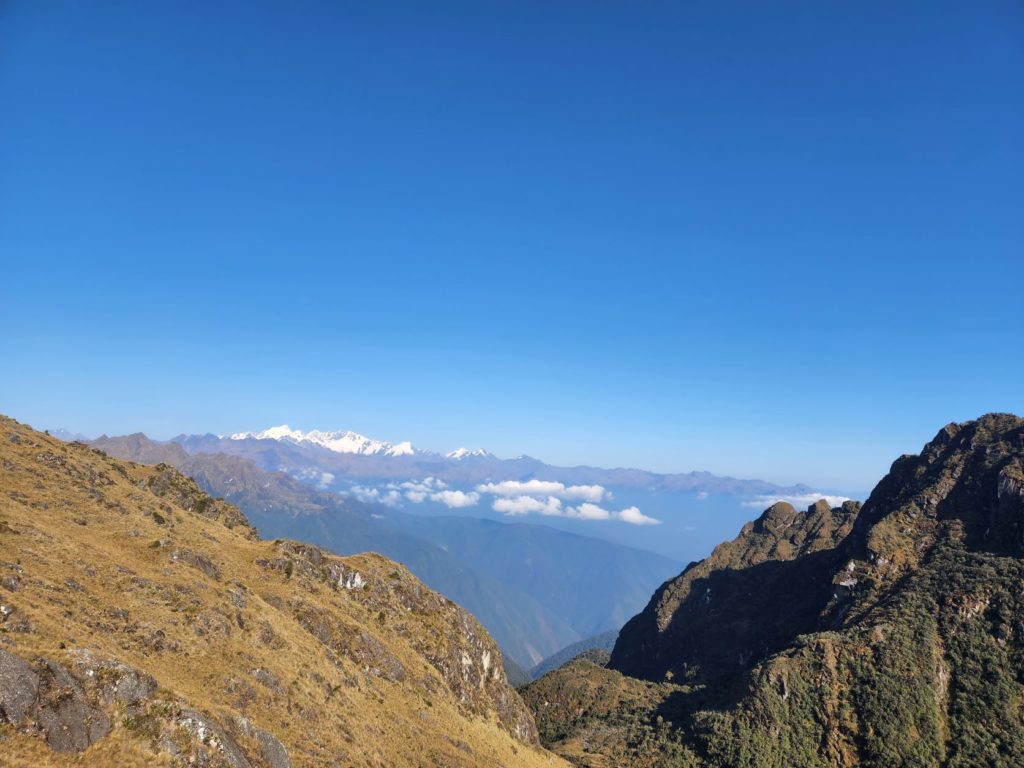
At this view point, we had panoramic views of the mountains. We could fully see the Puma Glacier and holding ponds filled with water from cloud condensation. As we admired the views, all my soreness left my mind, and I just felt lucky to be there on such a perfectly clear day.
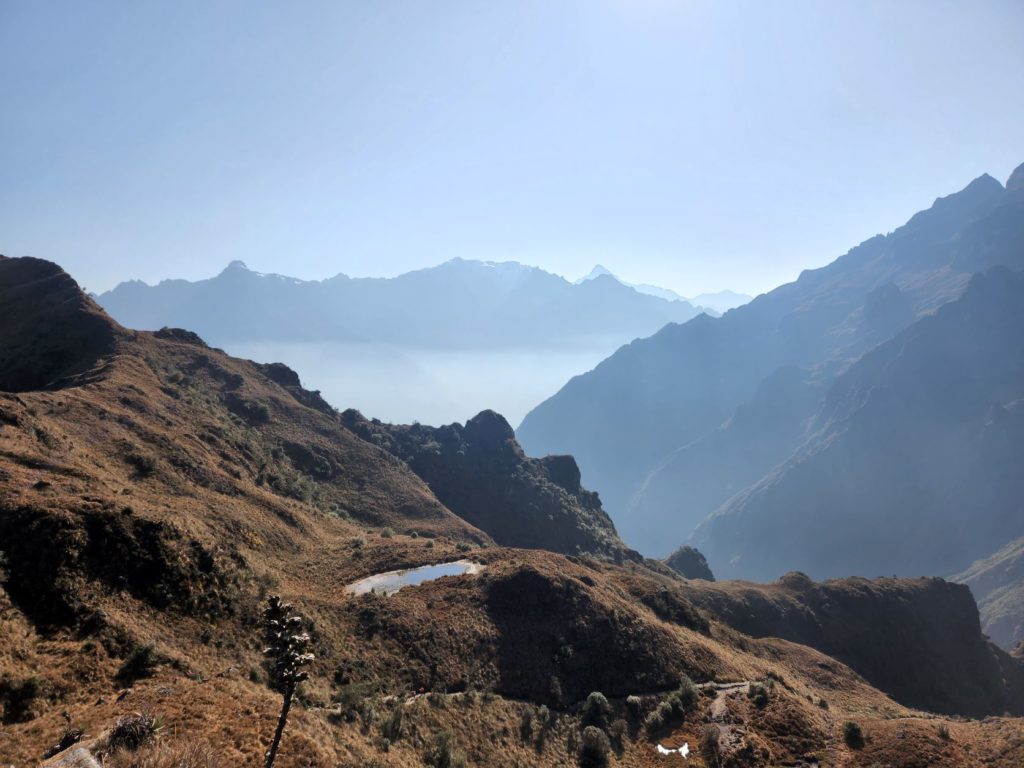
After getting our fill of the view, it was time to continue the trek to see some more Incan ruins
These ruins are considered a bit of a “detour” from the main Inca Trail because they’re up some steep steps. Still, these were my favorite of the trek aside from the actual Machu Picchu ruins. In Incan times, the emperor would stop and rest at this point. He would often have ceremonies with the shaman using natural drugs found in the area and spend time worshiping the mountains, glacier and Milky Way. We explored multiple rooms of these large ruins. One room contained the altar to the glacier. This altar was a large triangular stone meant to resemble the shape of a mountain. The black part of the stone was for the Milky Way, while the white was for the glacier.
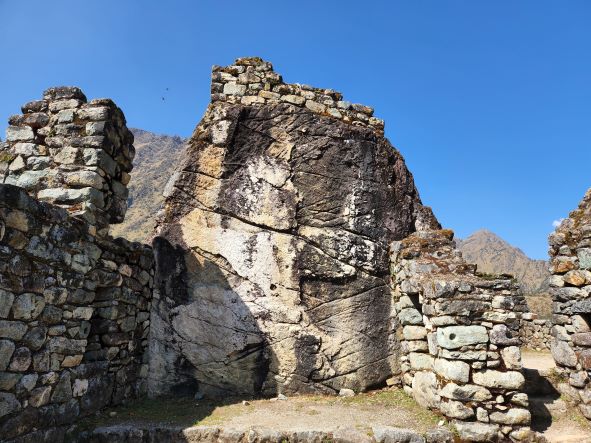
We toured the rest of the ruins and saw the doctor’s quarters and area where the emperor’s concubines would greet him. The ruins also had natural faucets the Incans constructed that would carry in glacier melt and rain water, but they were completely dry.
We descended from the ruins then continued at our own pace to the lunch spot. This section of the trek was the most mosquito-heavy area as it was at the lowest elevation. Though I put bug spray on my exposed skin, I managed to get bitten through my shirt here (mosquitos love me). This part of the trek took us through the high jungle and past some steep drop offs.
Our lunch spot once again had breathtaking views and adorable llamas. At one point, there were multiple llamas blocking our path back to the lunch spot. We weren’t sure if llamas were like horses, but we had to take our chance walking behind them. Luckily, they were very calm and not at all concerned about the humans right next to them.
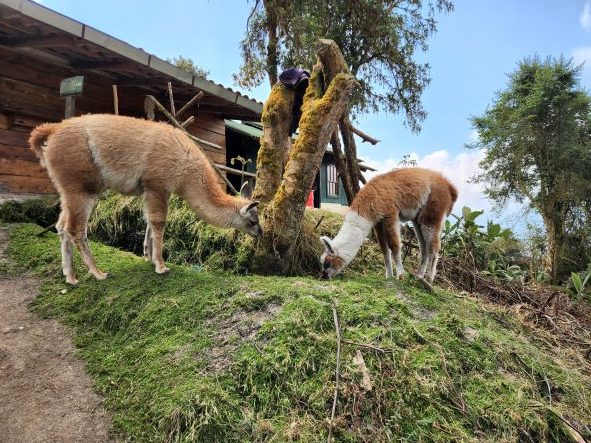
Because this lunch was our last of the trek, the chef went all out in presentation
He made our dishes in the shapes of different animals, including a tortoise made from a pineapple, a condor made from a cucumber, and an Andean Turkey carved from an apple.
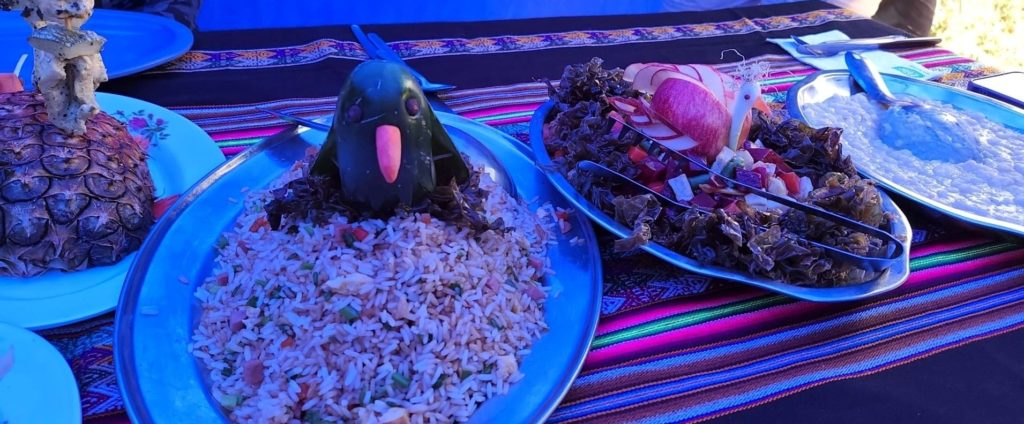
After lunch, we hiked to more Incan ruins nearby. These also had the Inca-engineered drains, but these actually had water flowing from them! Because we had such good weather the entire trek, we did not see the famous cloud forest. However, I’d much rather have perfect weather and clear views for a multi-day trek.
The hike down to our final campsite started feeling a bit tedious after a while. We were just going steadily downhill and surrounded by trees. Then, we turned a corner, and the most incredible view opened up before us. We could see ruins on one side, and a seemingly never-ending valley and river flowing below. It completely revitalized us for the rest of the day.
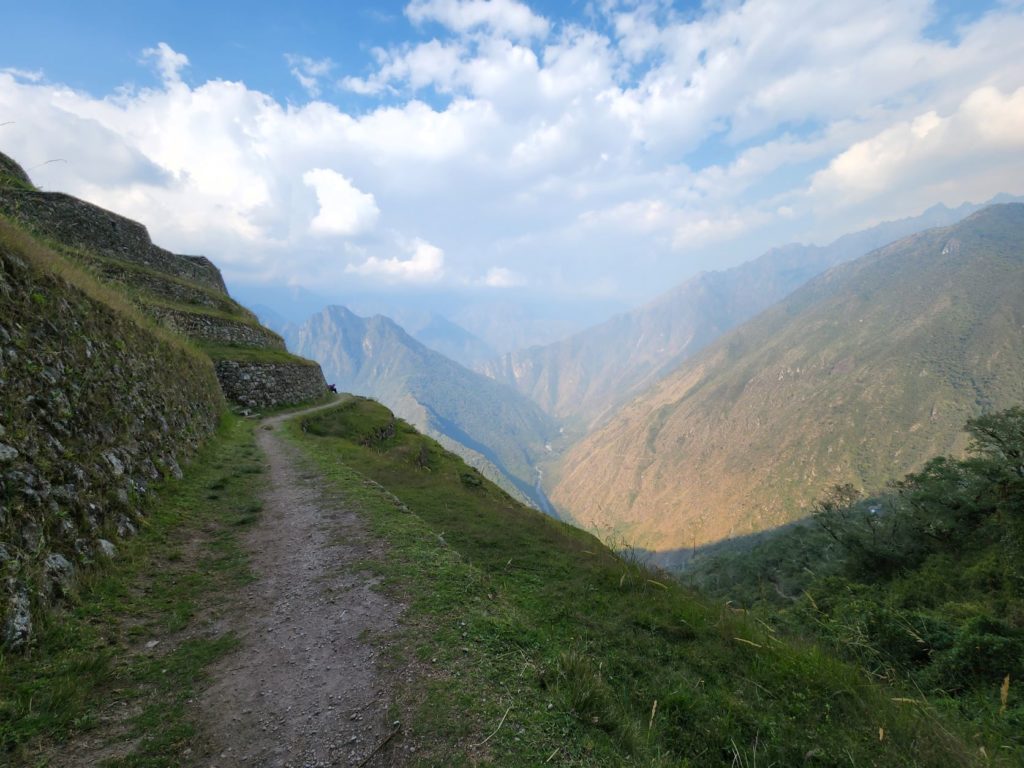
We hiked down to our camping site through an area with ancient Incan terraces. In Incan times, these terraces contained microclimates used to experiment with growing crops – mainly potatoes. In present day, Peru grows more than 4,000 varieties of potatoes. The terraces also helped prevent the mountain from collapsing in earthquakes and landslides
We arrived at our campsite ahead of schedule again and had plenty of time to relax before tea time. I did some stretching to help out my sore muscles, then started hearing some commotion in the trees. I looked out, and there were these small animals chasing each other and tumbling through the trees. We didn’t learn the official name of these animals, but our guide said they were in the opossum family.
Our chef had another surprise in store after dinner that night
To congratulate us on (almost) reaching our goal, he baked a cake that said “Welcome to Machu Picchu.” It was so kind and delicious, with fresh fruit on top. Before enjoying our cake, we held our tipping ceremony where we thanked the porters and chef and tipped them. During our briefing meeting, our guide told us the appropriate amounts to tip, and we gave just a little more than that.
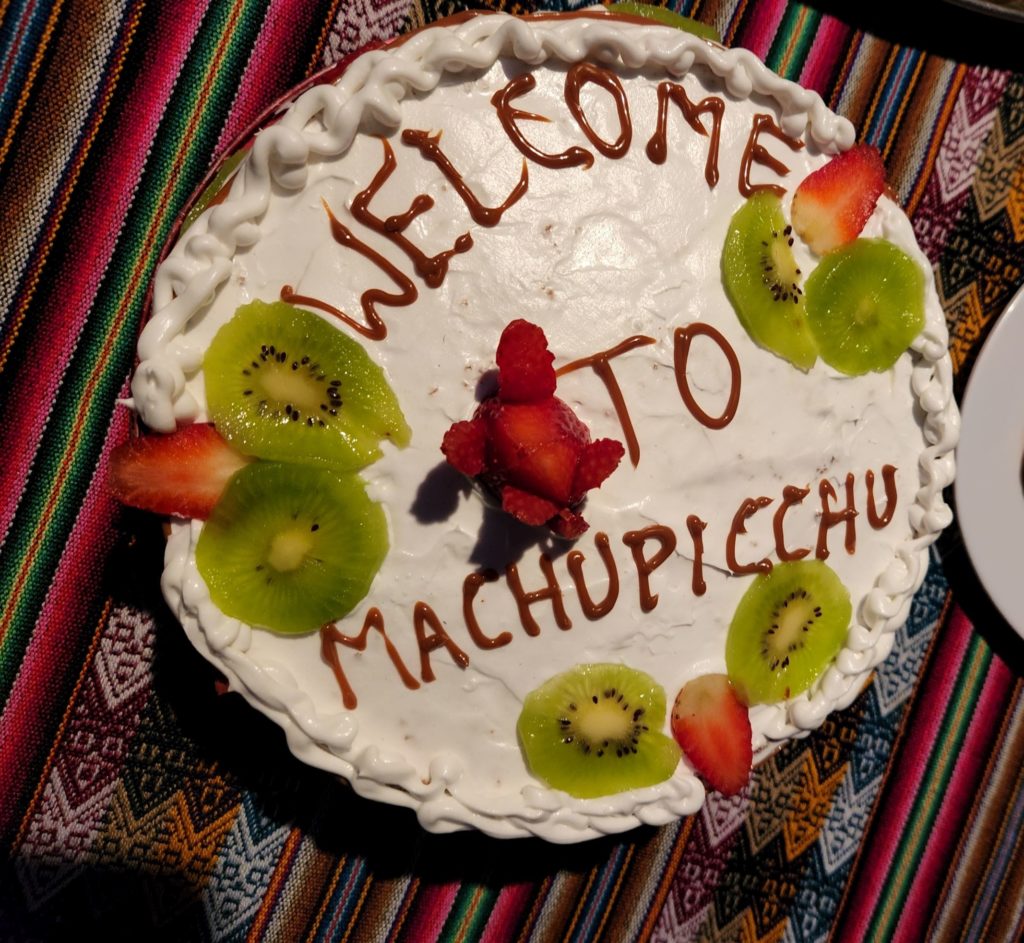
The next day was the day we would finally get to Machu Picchu. We went to bed right after dinner, feeling excitement for the next day and a little sadness that the Inca Trail trek was nearly over.
Read about what it was like finally getting to Machu Picchu in Part 2!
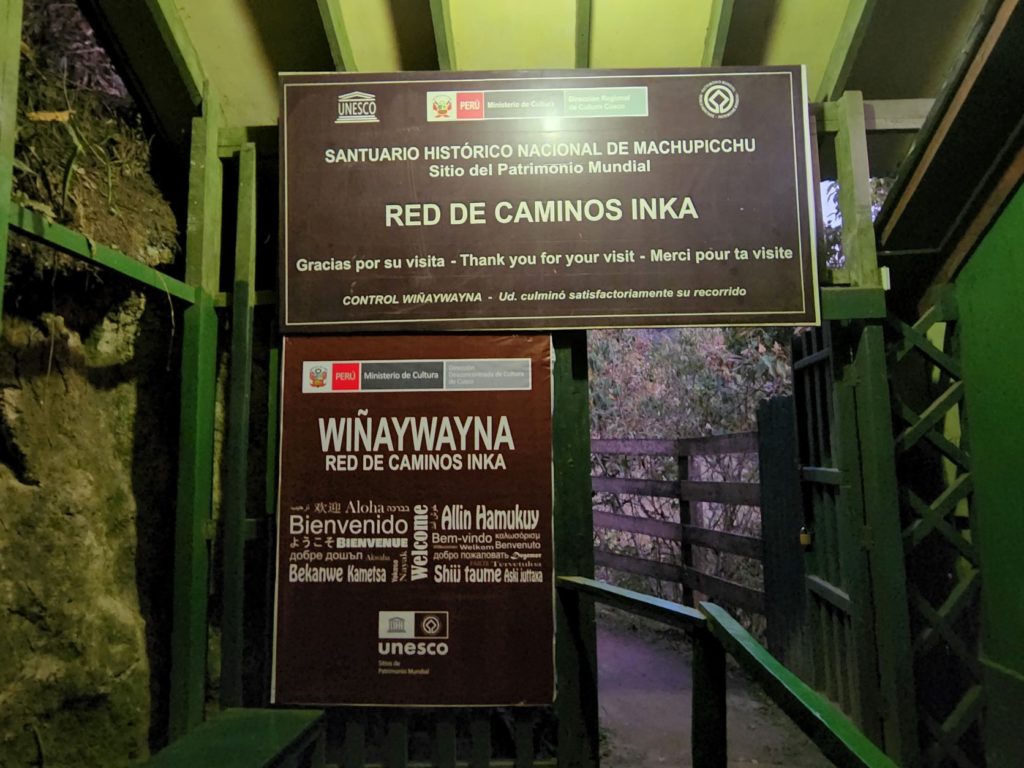

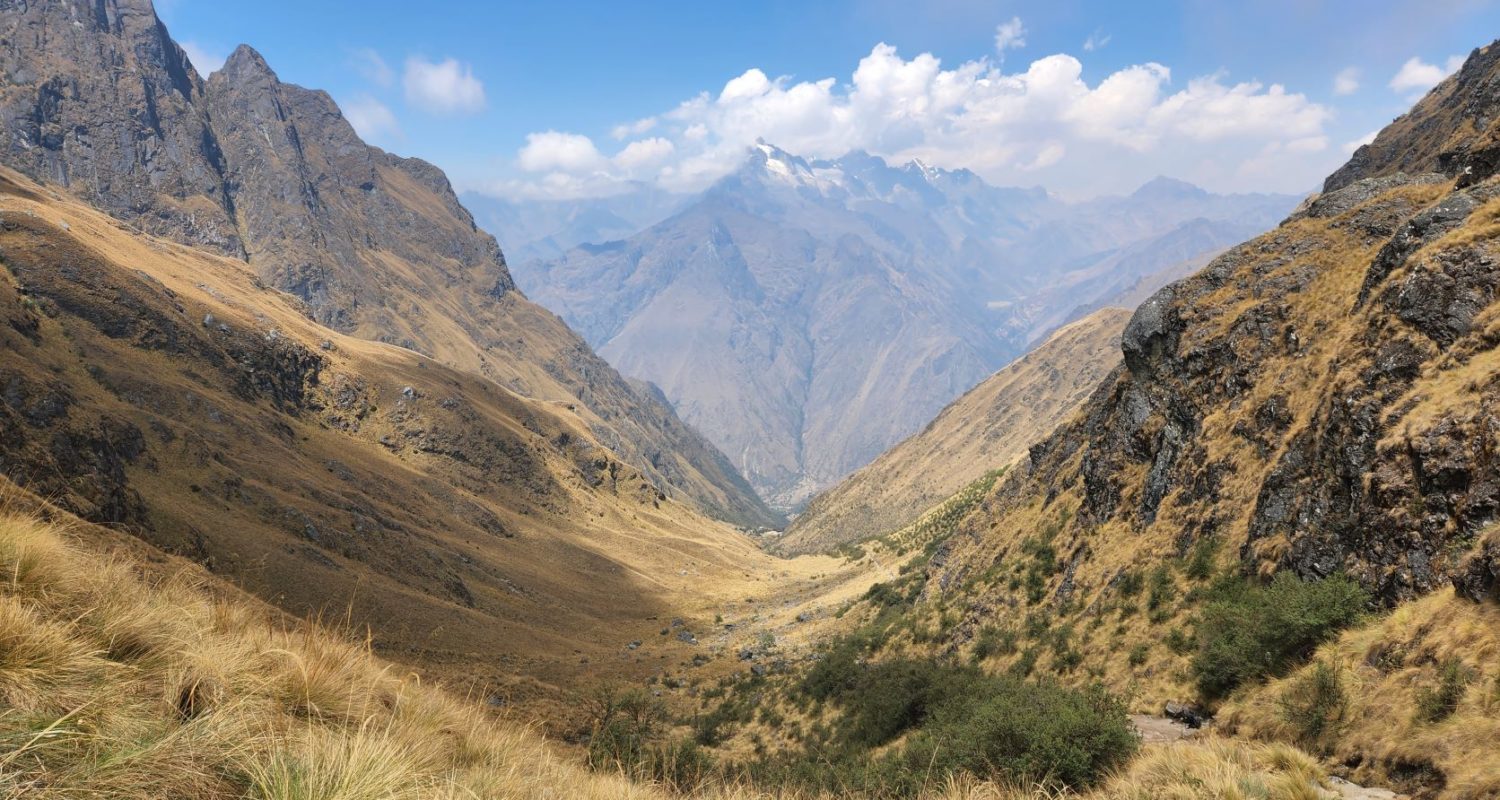
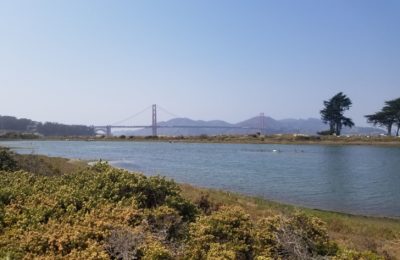
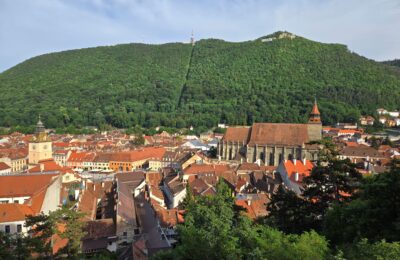
3 thoughts on “Inca Trail Part 1: The Beautiful Journey to Machu Picchu”